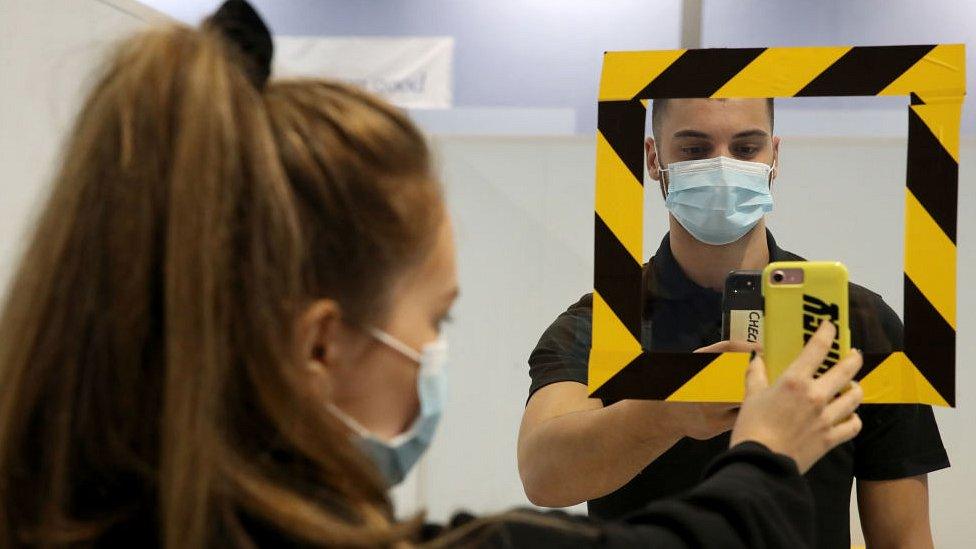Covid: How many cases might contact tracers have missed?
- Published

An IT failure has caused almost 16,000 coronavirus cases to go missing from official data in England. The infected individuals themselves were notified, and would hopefully have isolated to prevent spreading the infection, but the glitch meant none of their contacts were notified at the time.
A BBC analysis suggests this could mean at least 34,000 contacts were left in the dark about having been exposed to the virus.
And those missed contacts, who tracers are now urgently trying to reach, may have been unknowingly spreading the virus on to others for days.
Who is affected?
Speed is of the essence when it comes to contact-tracing. Every missed day represents an opportunity for the infection to travel.
At the moment, about 60% of people who are reached by a contact tracer will provide contacts - and they hand over the names of five people on average.
Of those contacts, 72% are reached and told to self-isolate.
Applying that performance to the 15,841 cases missed due to the IT glitch, we can estimate that almost 10,000 would have provided just under 50,000 contacts, of whom about 34,000 would be reached.
That's a conservative estimate, since the original 15,841 cases could have had as many as 80,000 close contacts, although the test-and-trace system would have been unlikely to reach all of them.
Based on NHS Test and Trace findings so far, most of the contacts would be what experts call "non-complex" cases - people living in the community rather than in care homes, for example.
Around 60% would be people living in the same household as the infected person who tested positive.
So, a big chunk of them may already be aware of the positive result.
Health Secretary Matt Hancock told Parliament 51% of the missed cases had been contacted since the weekend.

Where are they?
Analysis by the BBC's Data Journalism team shows that while all parts of England are affected, some areas make up a bigger share:
The North West had the most "missed" cases added to its testing figures over the weekend, almost doubling its infections from 9,012 to 17,360
But, because the North West has the largest number of cases overall, you'd expect it to have the most missed proportionally
In relative terms, the East Midlands and Yorkshire and the Humber saw the biggest increases in cases once the missed tests were added in
The North East and the South West also saw their testing figures for the last week more than double


The hotspots have become hotter
A breakdown of the lost cases has shown that while all parts of England are affected, most of them are in the North West, the area of the country that already had the highest rates of infection.
The two biggest cities - Liverpool and Manchester - had infection rates around 10 times the national average last week.
The rates reported previously - at just below 300 cases per 100,000 people - have now increased significantly, to between 400 and 500 cases per 100,000.
The government says it would not have altered the decisions ministers have taken - last week tougher rules were brought in on households mixing - but it does mean there is even more pressure to bring down infection levels in that part of the country.